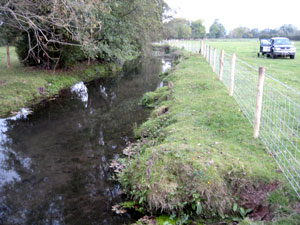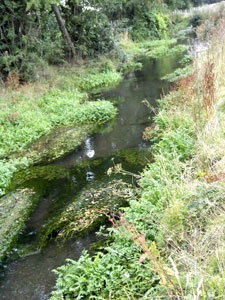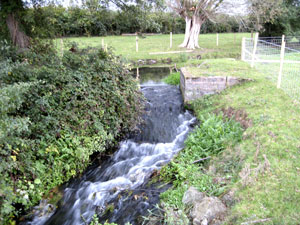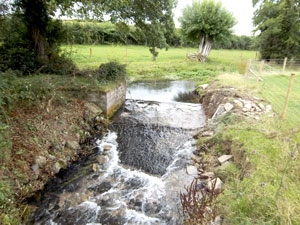LARA (Lugg and River Arrow) Project 2008 - 2011
In 2008 the Foundation secured funding from the SITA Trust's Enriching Nature Programme for a £194,000 lower Lugg and Arrow project. The trust was set up to manage sums from SITA's landfill tax and has used this to support actions under Entrust's DA (Biodiversity) measure.
With support from the Lugg & Arrow Fisheries Association (LAFA) and from the Wye Salmon Fisheries Owners Association (WSFOA), LARA will improve the biodiversity in the Lugg and Arrow within 10 miles of Leominster's licensed land fill site. In 2007 salmon, trout and the habitat "rivers and streams" were added to the UK Biodiversity Action Plan (BAP). These, plus brook and river lamprey, bullhead, otter, a wide range of invertebrates (inc. crayfish), grey wagtail, kingfisher, dipper and sand martin will benefit from the project.
The project has 3 main areas of activity:
-
Riverline habitat restoration
-
Fish passage
-
Improving water quality
The project began with baseline surveys including a macrophyte (plants that live in or near water) survey.
Habitat Restoration
The project will focus on fencing out the most damaged of the tributaries in the area. These include: Pinsley; Tippets; Broad; Aston; Curl and Wellington brooks; and the river Arrow.
In addition to this, a sequential 3-year work plan has been developed for 1.2km of the main stem of the Lugg at Mortimer's cross. The first stage of this involved re-establishment of ranunculus and increasing the cover on the banks. 580m was completed in September 2009. Also, a new site of 2.4km of main stem on the Arrow at Monkland was coppiced and the willow laid into the banks.

Above & right: The results of habitat work on the Pinsley brook. The right hand photo was taken 6 months after the stream was fenced off and shows regeneration of bank and in-river vegetation, along with a narrowing and deepening of the stream.

Fish Access
Barriers on the Humber, Stansbach, and Pinsley (2) brooks and certain Lugg tributaries all have barriers that need modification or removal and these will be managed during the project.


Above: The left hand photo shows the weir at Cholstrey Farm. Most of the flow was diverted through a mill leat around the back of the weir (hidden, top left of the photo). Fish trying to migrate upstream were being attracted to this flow, only to have their progress blocked by an impassable barrier. Post easement work (right) - the Foundation widened and lowered the weir and diverted the whole flow through it.
Water Quality
The project area falls within the fiefdom of the Lugg Internal Drainage Board. We have had extensive discussion with them in the formulation their BAP. The upshot is that certain streams will no longer receive regular ditching and spraying and will be left to reform naturally. As well as that, we will be advising farmers on avoiding (diffuse) pollution, especially with regards clean and dirty water separation.
Project Progress...
2009
September
-
Macrophyte survey completed (other surveys)
-
Fish passes on Stansbatch stream
-
580m of habitat work completed on the Lugg at Mortimers Cross
-
Leat blocked at Cholstrey (R Pinsley) 7.8km upstream habitat accessible
December
-
1km of fencing and 3.66km of coppicing on the Pinsley
2010
June
-
Electro fishing survey
August
-
Cholstrey weir modified to allow salmon passage
-
Tippets brook at Luntley Farm fenced – an extra field will be completed when it has been cropped.
-
V weirs and deflectors fitted to Broad and Aston brooks
September
-
V weirs and deflectors fitted to Broad and Aston brooks
-
Baulk fish pass at Grove Farm modified
-
Humber weir lowered to improve fish access
October
-
Lime brook coppiced below Lingen - for fencing 2011
